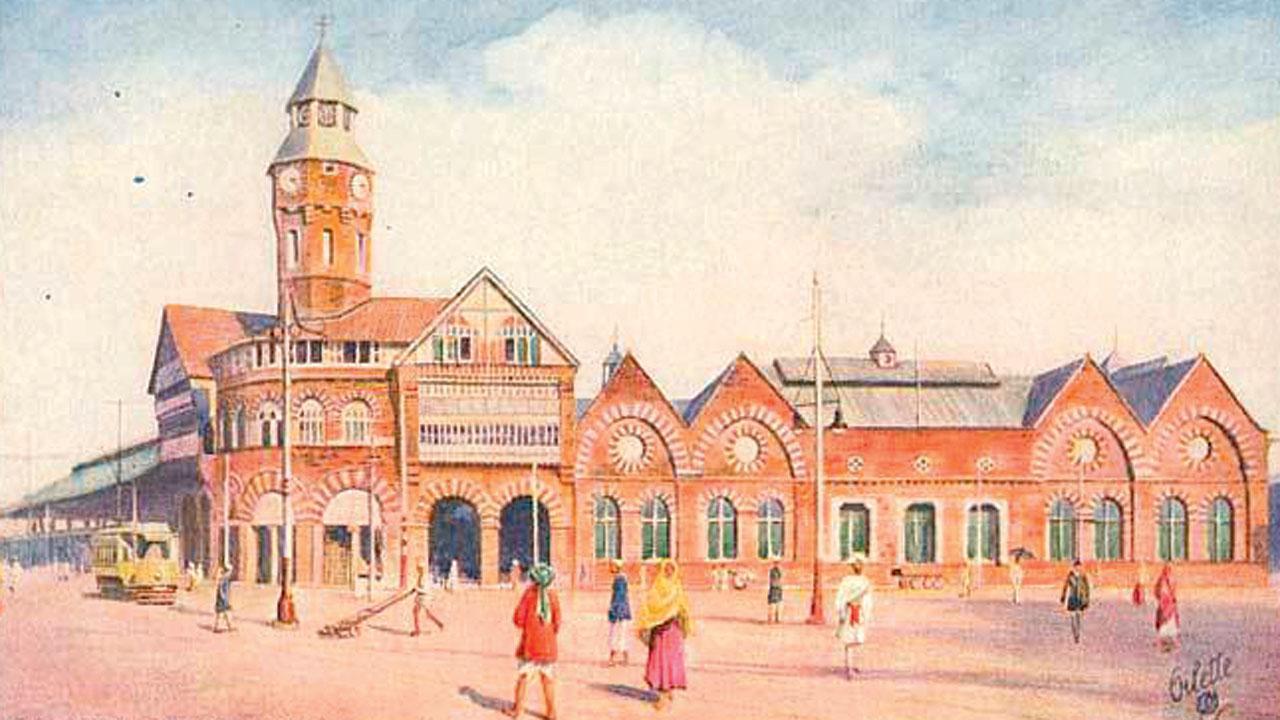Home / Mumbai-guide / Things To Do / Article /
Uncover fascinating facts about Crawford Market with this online lecture today
Updated On: 06 September, 2023 07:52 AM IST | Mumbai | Tanishka D’Lyma
Attend an online lecture today by Dr Pushkar Sohoni that will throw light on some interesting histories about colonial market halls, including Mumbai’s Crawford Market

Illustration of Crawford Market in Mumbai on a postcard
If you’ve ever looked at Crawford Market as a singular marketplace phenomenon that has served the people of Bombay since the 1800s and continues to do the same for Mumbaikars, here’s a chance to look at market halls as an institution. Architect and historian Dr Pushkar Sohoni, who is an associate professor and Chair of Humanities and Social Sciences at the Indian Institute of Science Education and Research (IISER) in Pune, will conduct a talk called Markers of Modernity: Colonial Market Halls, on public market halls built across colonial India from the 1870s to the 1940s in an online lecture hosted by Chhatrapati Shivaji Maharaj Vastu Sangrahalaya and the Museum Society of Mumbai.
 vKhanderao Market, Vadodara. Pics Courtesy/Dr Pushkar Sohoni
vKhanderao Market, Vadodara. Pics Courtesy/Dr Pushkar Sohoni



